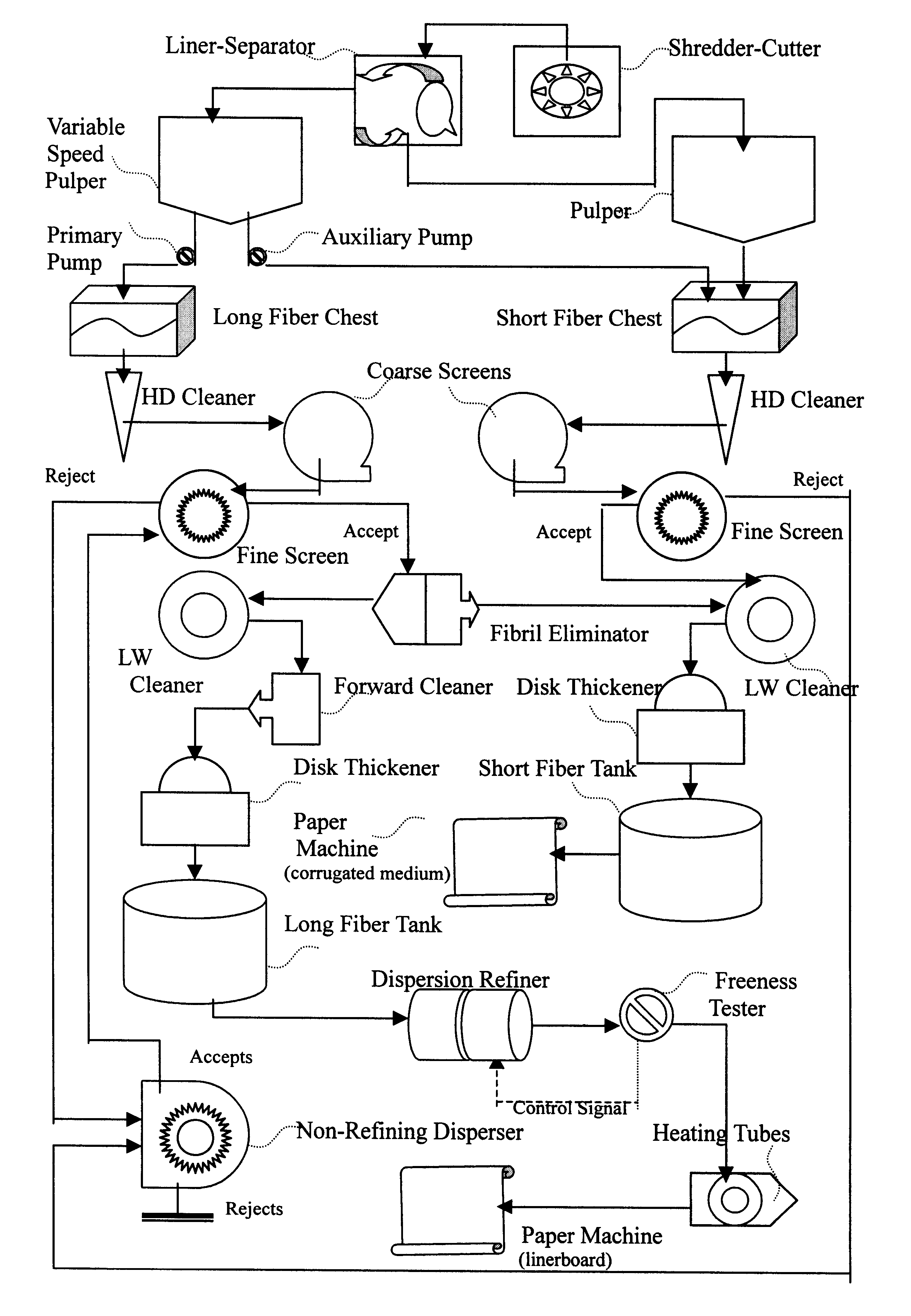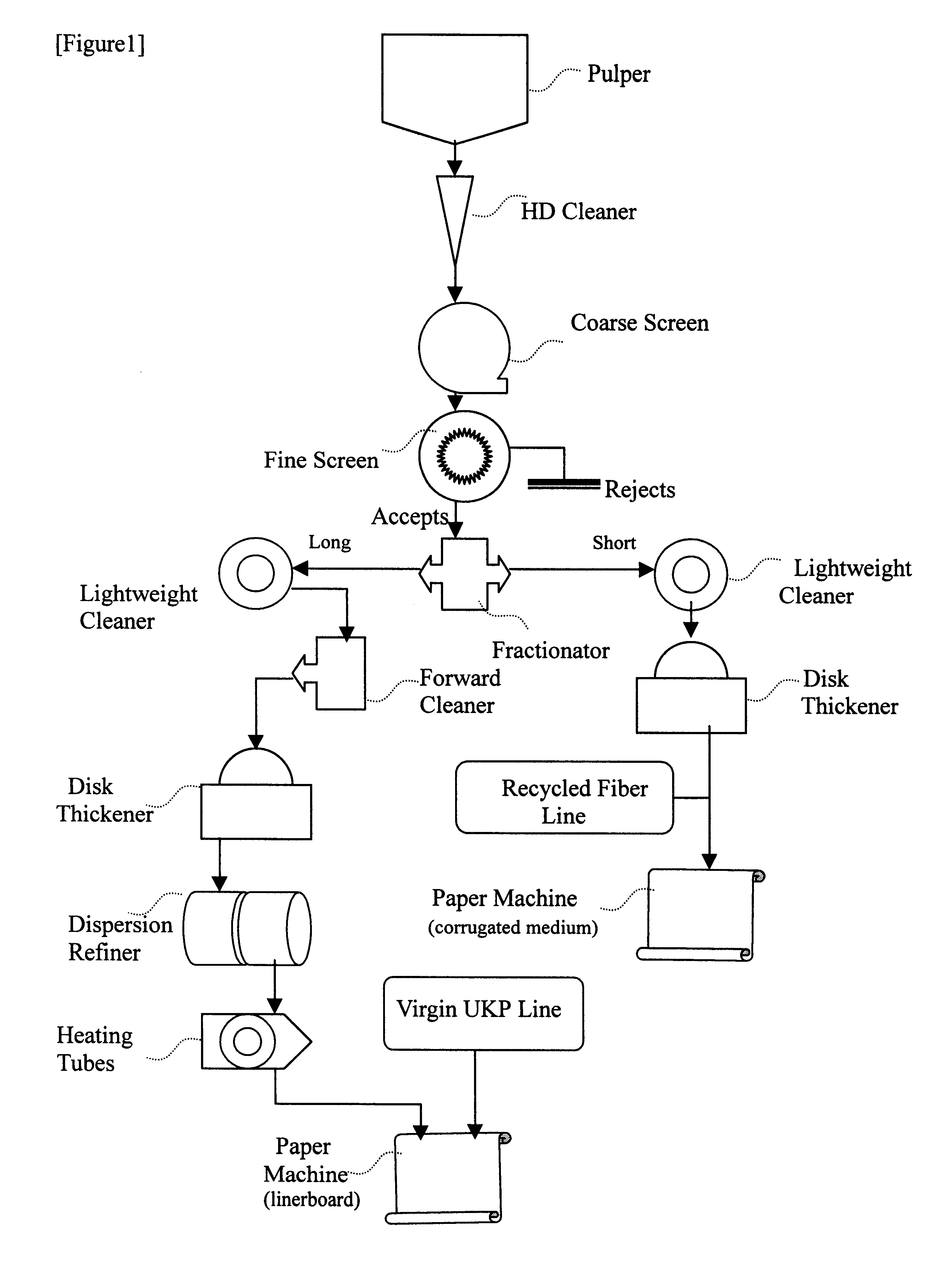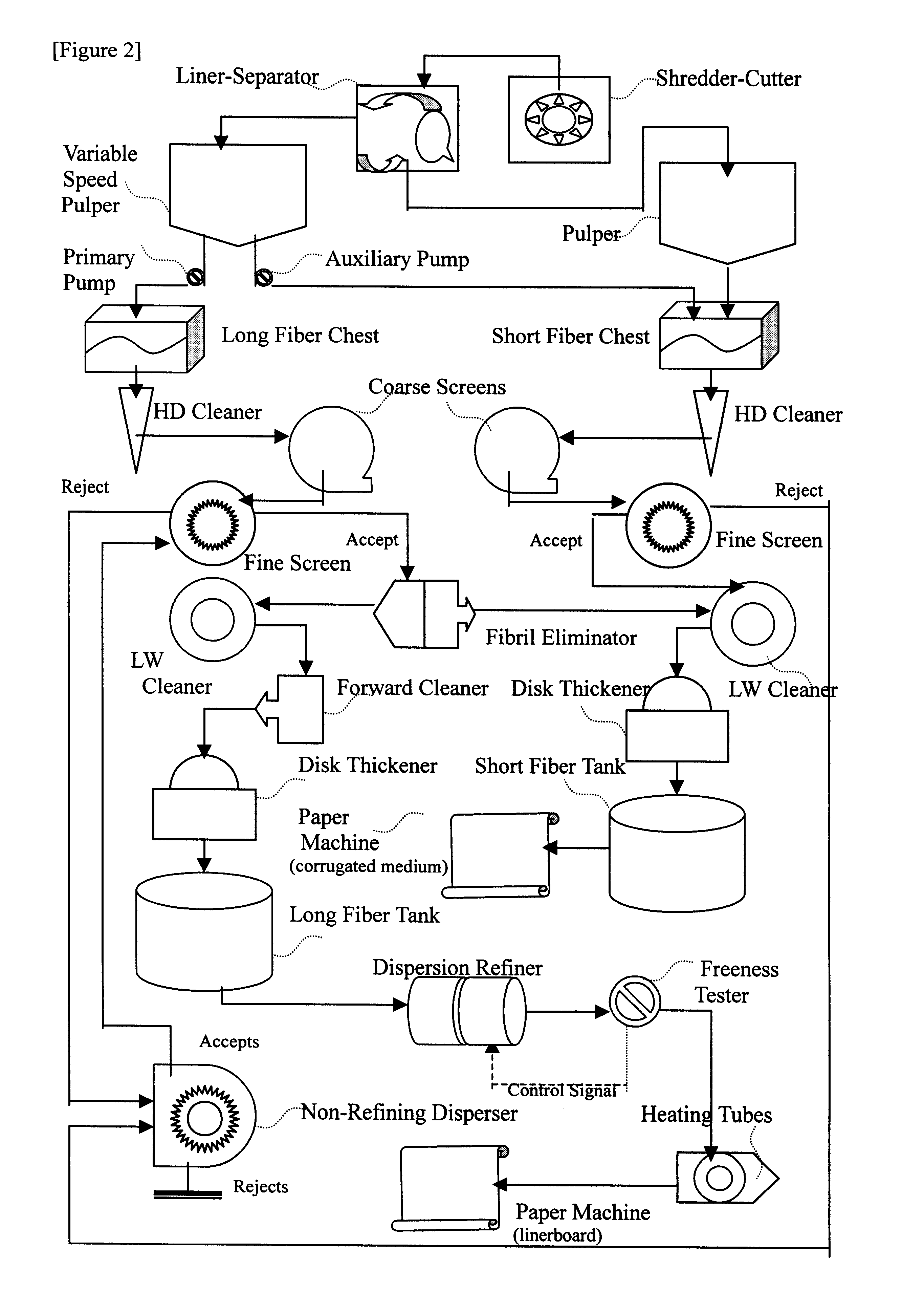Process of making recycled linerboard or Kraft paper from old corrugated container
a technology of corrugated containers and linerboard, which is applied in the field of making recycled linerboard or kraft paper from occ, can solve the problems of insufficient strength requirement, inability to recover ukp content to the level required for high quality linerboard or kraft paper, and inability to consume virgin ukp
- Summary
- Abstract
- Description
- Claims
- Application Information
AI Technical Summary
Problems solved by technology
Method used
Image
Examples
Embodiment Construction
The first example is the case of using recovered UKP from OCC for recycled Kraft paper manufacturing. After linerboard pieces are separated from 1 ton of OCC, about the half a ton of old sack Kraft paper is added together with 15 Kg of NaOH just before the second stage pulping. The test results are compared against Korean standards in the following table.
It can be seen from above test results that separation of linerboard by the method specified by this invention made it possible to achieve the level of tensile breaking strength and stretch specified by Korean standard. This has been possible only by adding virgin UKP to OCC furnish. This implies the fact that UKP in OCC is effectively recovered and utilized for the enhancement of strength properties of recycled Kraft paper.
In another example, this invention is applied to 21.7 tons of OCC. Since average UKP content of US made OCC is 55% (1998 data published by American Forest and Paper Association), at least 55% of OCC must be recov...
PUM
| Property | Measurement | Unit |
|---|---|---|
| length | aaaaa | aaaaa |
| length | aaaaa | aaaaa |
| strength properties | aaaaa | aaaaa |
Abstract
Description
Claims
Application Information
 Login to View More
Login to View More - R&D
- Intellectual Property
- Life Sciences
- Materials
- Tech Scout
- Unparalleled Data Quality
- Higher Quality Content
- 60% Fewer Hallucinations
Browse by: Latest US Patents, China's latest patents, Technical Efficacy Thesaurus, Application Domain, Technology Topic, Popular Technical Reports.
© 2025 PatSnap. All rights reserved.Legal|Privacy policy|Modern Slavery Act Transparency Statement|Sitemap|About US| Contact US: help@patsnap.com



